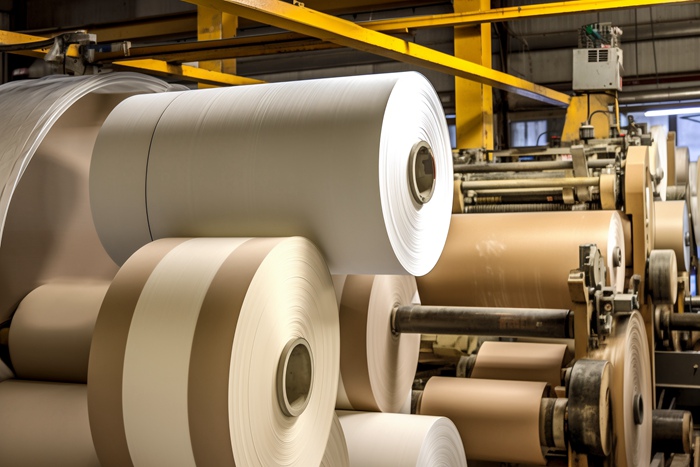The pulp and paper industry is a cornerstone of modern manufacturing, producing a wide range of products from packaging materials to fine writing papers. The quality and functionality of these products are heavily influenced by the chemicals used during the papermaking process. Among the most critical chemical additives are dry strengthen agents, wet strength agents, and surface sizing agents. These chemicals play pivotal roles in enhancing the mechanical, structural, and surface properties of paper, ensuring it meets the diverse demands of end-users. This article delves into the chemistry, mechanisms, and applications of these key additives in the pulp and paper industry.
- Dry Strengthen Agents
Dry strengthen agents are chemicals added to the papermaking process to improve the tensile strength, burst strength, and tear resistance of paper under dry conditions. These agents are particularly important for packaging papers, printing papers, and other applications where mechanical durability is critical.
1.1 Chemistry and Mechanisms
Dry strengthen agents typically include natural and synthetic polymers such as starches, polyacrylamides (PAM), and carboxymethyl cellulose (CMC). These polymers function by forming hydrogen bonds with cellulose fibers, effectively bridging gaps between fibers and increasing the overall bonding strength of the paper network.
– Starches: Cationic starches are widely used due to their affinity for negatively charged cellulose fibers. They adsorb onto the fiber surface, enhancing fiber-to-fiber bonding.
– Polyacrylamides: These synthetic polymers are highly effective at improving dry strength due to their high molecular weight and ability to form extensive networks within the paper matrix.
– Carboxymethyl Cellulose (CMC): CMC acts as a dry strengthen agent by increasing the viscosity of the pulp slurry, promoting better fiber alignment and bonding.
1.2 Applications
Dry strengthen agents are essential in the production of:
– Kraft paper: Used for heavy-duty packaging, requiring high tensile strength.
– Printing and writing papers: Ensuring durability during handling and printing processes.
– Tissue papers: Enhancing softness while maintaining strength.
Wet strength agents are critical for papers that must maintain their integrity when exposed to water or high humidity. Examples include paper towels, food packaging, and filter papers. Unlike dry strength, wet strength is achieved through chemical crosslinking that resists water-induced fiber separation.
2.1 Chemistry and Mechanisms
Wet strength agents are typically resin-based chemicals that form covalent bonds with cellulose fibers, creating a water-resistant network. The most commonly used wet strength agents include:
– Polyamide-epichlorohydrin (PAE) resins: These are cationic resins that react with cellulose fibers under alkaline conditions, forming strong, water-resistant bonds.
– Urea-formaldehyde (UF) and Melamine-formaldehyde (MF) resins: These thermosetting resins crosslink with cellulose fibers, providing excellent wet strength but are less environmentally friendly due to formaldehyde emissions.
– Glyoxalated polyacrylamides (GPAM): These agents offer temporary wet strength and are often used in tissue papers.
The mechanism of wet strength agents involves the formation of covalent bonds that are not easily disrupted by water, unlike the hydrogen bonds responsible for dry strength.
2.2 Applications
Wet strength agents are indispensable in the production of:
– Paper towels and napkins: Requiring durability when wet.
– Food packaging papers: Ensuring integrity in moist environments.
– Filter papers: Maintaining structure during filtration processes.
- Surface Sizing Agents
Surface sizing agents are applied to the surface of paper to improve its resistance to liquid penetration, enhance printability, and increase surface strength. These agents are crucial for achieving the desired surface properties in printing and writing papers.
3.1 Chemistry and Mechanisms
Surface sizing agents are typically applied at the size press or film press during papermaking. Common agents include:
– Starches: Modified starches, such as oxidized or cationic starches, are widely used for surface sizing. They form a film on the paper surface, reducing porosity and improving ink holdout.
– Styrene-acrylate copolymers: These synthetic polymers provide excellent surface strength and water resistance.
– Alkyl ketene dimer (AKD) and alkenyl succinic anhydride (ASA): These sizing agents react with cellulose fibers to create hydrophobic surfaces, reducing water absorption.
Surface sizing agents work by forming a thin, uniform layer on the paper surface, which modifies its interaction with liquids and inks. This layer enhances the paper’s resistance to liquid penetration while improving its printability and surface smoothness.
3.2 Applications
Surface sizing agents are vital for:
– Printing papers: Ensuring sharp print quality and ink adhesion.
– Writing papers: Preventing ink feathering and bleed-through.
– Packaging papers: Enhancing water resistance and durability.
- Synergistic Effects of Chemical Additives
In modern papermaking, the combined use of dry strengthen agents, wet strength agents, and surface sizing agents is common to achieve a balance of properties. For example, a packaging paper may require high dry strength for durability, wet strength for moisture resistance, and surface sizing for printability. The interaction between these chemicals must be carefully optimized to avoid negative effects, such as reduced absorbency or excessive stiffness.
4.1 Challenges and Considerations
– Compatibility: Ensuring that different additives do not interfere with each other’s performance.
– Environmental impact: Developing eco-friendly alternatives to traditional chemicals, such as formaldehyde-based resins.
– Cost-effectiveness: Balancing performance improvements with production costs.
- Future Trends in Pulp and Paper Chemicals
The pulp and paper industry is increasingly focused on sustainability and innovation. Key trends include:
– Bio-based chemicals: Developing dry strengthen agents, wet strength agents, and surface sizing agents from renewable resources.
– Nanotechnology: Utilizing nanomaterials to enhance paper properties at lower additive levels.
– Smart coatings: Incorporating functional additives, such as antimicrobial agents or conductive materials, for specialized applications.
Conclusion
Dry strengthen agents, wet strength agents, and surface sizing agents are indispensable components of modern papermaking, each contributing uniquely to the final properties of paper. As the industry evolves, the development of advanced, sustainable chemical additives will continue to drive innovation, enabling the production of high-performance papers that meet the ever-changing needs of consumers and industries. By understanding the chemistry and applications of these agents, paper manufacturers can optimize their processes and deliver superior products to the market.


